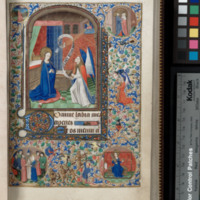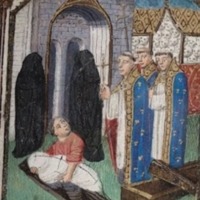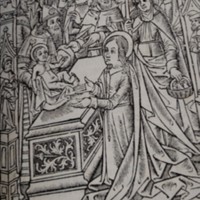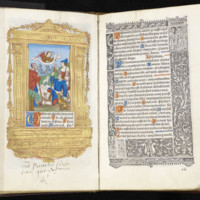The Art of Devotion
During the Middle Ages, the Book of Hours encapsulated Christian faith in an ornate, tactile object that personalized individual believers’ relationship with God. Most books contained a complete calendar listing saints’ feasts and Holy Days, the Office of the Virgin, the seven Penitential Psalms, the fifteen Gradual Psalms, the Office of the Dead, and the Hours of the Passion.
Each day’s devotion was based upon the saint’s feast, then upon the repetition of the Office, imitating the Church’s daily practice of the Divine Office. Serving as a spiritual guide for many Christians, the Book of Hours helped further institute widespread, ritualistic, faith-based practice. As a medieval religious emblem, the Book of Hours typified the complex yet organized system of beliefs and practices espoused by the Catholic Church. As an object of modern study, it illustrates a functionally designed, spiritual handbook that served its audience as an indispensable tool in daily devotional practice.
Four Books of Hours from the Spencer Research Library collections were selected for this study – two from the mid-15th century and two from the early-16th century. Each book uniquely illustrates content typical of a Book of Hours, with individual characteristics that reflect the tastes of its changing audience. Our exhibit works to demonstrate the Book of Hours’ importance to its audience, its function as an apparatus of faith, and its various uses as a spiritual guidebook.



